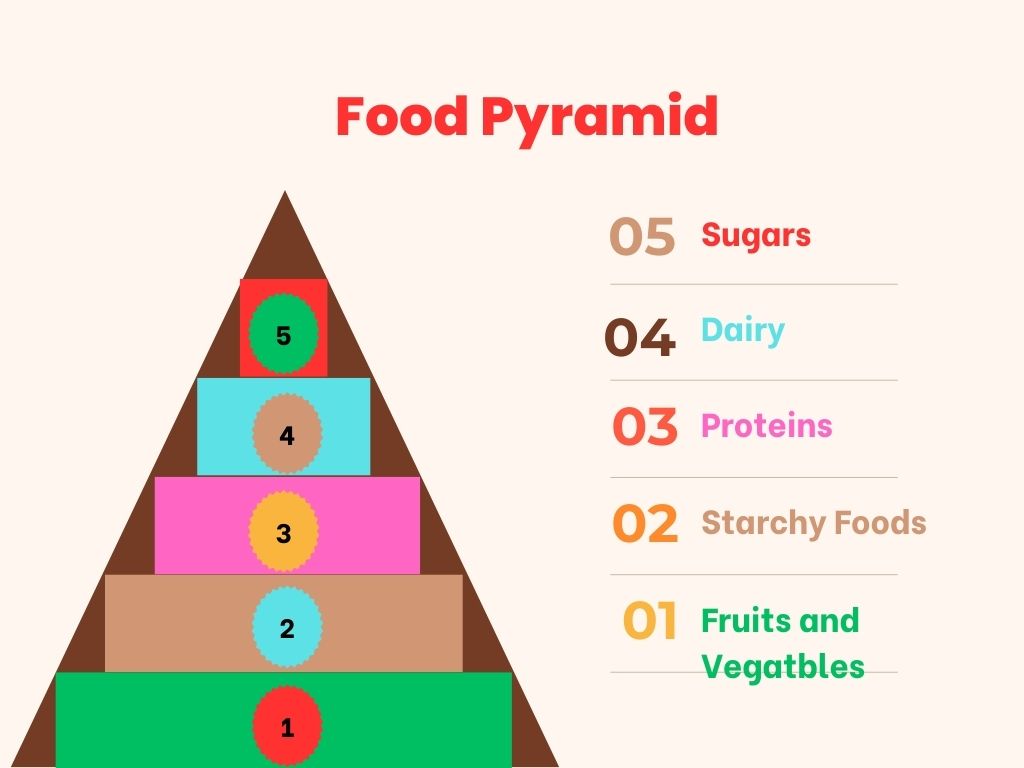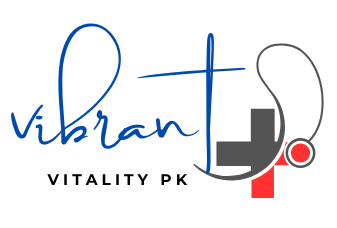HOW COULD WE REVEAL THE ENDURING UTILITY OF FOOD PYRAMID AND MYPLATE CONCEPTS AS 2 POWERFUL NUTRITIONAL TOOLS?

For years, the utility of food pyramid and MyPlate concepts are emphasized as visual tools to direct and guide people towards healthy habits and balanced diet initiatives.
Public health authorities also pour lot of attention towards the utility of food pyramid and MyPlate concepts in order to ensure optimum health of masses and impacts of healthy eating on overall wellbeing.
The utility of food pyramid and MyPlate concepts can be traced back to 1940s when United States Department of Agriculture (USDA) introduced a concept of “Basic Seven” groups of food items and also add it in their nutritional education program.
Over the years, food pyramid concept evolved into more accurate and practical concepts like Food Guide Pyramid which was introduced in 1992 and remained as USDA dietary guidelines for 19 years further.
Moving forward, in 2011, USDA introduced a more refined and nutritional based concept of ‘My plate’. My plate concept embarks upon various food groups, their nutritional importance and portion sizes as well.
My plate concept proved more objective and emphasize more upon portion sizes and significance of vegetables and fruits as prime pillars of healthy diet. Now, my plate concept has become a familiar standard for all countries in connection with the nutrition and balanced diet.
Notwithstanding the change from pyramid to plate, the two models have persevered as fundamental instruments for conveying complex dietary suggestions to the overall population.
In this article, we will investigate the utility of food pyramid and MyPlate concepts and proceeded with importance of these notable visual guides, looking at how they have molded dietary propensities, impacted public health approaches, and stayed applicable in a time of developing nutritional science.

The Long-Lasting Legacy and Utility of Food Pyramid and Food Plate Concepts
The food pyramid concept is considered as a centerpiece of nutritional guidelines devised by the USDA in its several iterations. Food pyramid concept is simple yet effective nutritional roadmap which entails 5 major food groups i.e. fruits, vegetables, grains, dairy and proteins. Furthermore, the said concept embarks upon suitable portions and proportions of each food group to make a diet a healthy diet.
The force of the food pyramid lay in its capacity to distil complex nutritional proposals into a straightforward visual. By introducing the nutrition groups in a various leveled structure, the pyramid conveyed the significance of specific food group over others, directing individuals towards a fair and balanced diet.
One of the pyramid’s key assets was its adaptability in obliging different nutritional necessities and inclinations. While the base of the triangle stressed grains, organic products, and vegetables as the underpinning of a sound eating routine, the upper levels considered the incorporation of dairy and protein sources, taking special care of a scope of nutritional prerequisites and cultural and social food customs and traditions.
Moreover, the food pyramid gave an unmistakable system to portion size control, with the general sizes of every nutrition type outwardly addressing the suggested servings. This informed the general public on suitable serving sizes, a significant part of keeping a healthy eating routine and forestalling overconsumption.
The enduring impact of the food pyramid should be visible in its far and wide reception and coordination into public health drives, school educational programs, and consumer’s training programs all over the world. It turned into a natural and confided icon, a shorthand for sound nutritional counsel that rose above social, cultural and geographic limits.

The Emergence of the Food Plate
As the research on nutrition and balanced diet evolved, certain limitations of food pyramid concept become quite visible. The major criticism arose on food pyramid over attention towards grains and its failure to effectively distinguished between good and bad fats foods. Furthermore, food pyramid shows a biased approach towards agricultural industry.
In light of these concerns, the USDA presented the MyPlate concept in 2011, denoting a huge change in the manner dietary direction was introduced to the general public. The food plate model stressed the significance of proportions, outwardly portraying the suggested servings of every nutrition type in a simple, basic and natural way.
The MyPlate plan, with its particular quadrants for fruits, vegetables, grains, and protein, alongside a more modest circle for dairy, gave a reasonable and functional visual reference for building a fair dietary plan. This approach resounded with general public, as it adjusted all the more intimately with the recognizable experience of planning and eating a dinner, instead of the theoretical and abstract hierarchy of the food pyramid.
Besides, the MyPlate model put a more grounded accentuation on the utilization of fruits and vegetables, empowering individuals to fill a portion of their plate with these nutritionally thick food groups. This shift mirrored the developing group of proof featuring the significance of plant-based food sources in advancing overall wellbeing and lessening the risks of ongoing chronic diseases. In short, the utility of food pyramid and MyPlate concepts has far reaching consequences.
The change to the food plate idea likewise concurred with a more extensive development towards personalized nutrition and the acknowledgment that one-size-fits-all dietary rules may not be adequate for all. The MyPlate model, with its adaptability and adjustable nature, permitted people to adjust the proposals to their particular requirements, needs, inclinations, and social & cultural settings.
Soon after its presentation, the MyPlate symbol has been broadly taken on and adjusted by governments, educational establishments, and public health associations around the globe. Its effortlessness, instinctive plan, and arrangement with current nutritional science have cemented its situation as a main visual tool for dietary direction and guidance.
.
The Enduring Relevance of Visual Dietary Guides
Regardless of the development from the food pyramid to the food plate, the utility of food pyramid and MyPlate concepts in the field of nutrition and healthy eating cannot be denied. These visual guides keep on filling in as amazing assets for conveying complex dietary data in a reasonable and open manner.
One of the prime reasons behind the exemplary outcome of these models is their capacity to overcome any barrier between logical exploration and regular dietary decisions. It further adds to the utility of food pyramid and food plate concepts.
By making an interpretation of specialized nutritional rules into straightforward visual designs and portrayals, the food pyramid and food plate have engaged people to come to additional wise conclusions about their nutritional utilization.
Moreover, these models play had a significant impact in molding public health strategies and drives, filling in as the establishment for food-based dietary rules, school nutritional projects, and community-based health related interventions. The utility of food pyramid and food plate concepts cannot denied.
Such broad reception and fusion of these visual models into different instructive and strategy structures have been instrumental in advancing better dietary patterns and further developing general public level nutritional results.
The relevance and utility of food pyramid and MyPlate concepts are especially obvious in their capacity to adjust and adapt towards changing nutritional landscapes and further evolving research. As logical comprehension of the intricacies of human nutrition has developed, these visual models have gone through unpretentious yet significant adjustments to line up with the most recent evidence-based suggestions.
For instance, the change from the food pyramid to the MyPlate model mirrored a developing reflection on portion control, expanded fruits and vegetables utilization, and the acknowledgment of the significance of healthy fats and plant-based protein sources. These variations have permitted the visual dietary guides for stay relevant and receptive to the developing needs and preferences of public health partners.
Besides, the universality of these visual guides has made them significant apparatuses for encouraging nutritional training and advancing healthy eating habits, especially among vulnerable populaces and those with restricted access to complete healthful and nutritional information.
By giving a basic, simple, generally conspicuous system for understanding the components of a balanced diet, the utility of food pyramid and MyPlate concepts have enabled people to pursue more educated and wise decisions, even in resourced constraint and lower literacy areas.
The Future of Dietary Guidance: Utility of Food Pyramid and MyPlate Concepts & Integrating Visual Models with Personalized Nutrition
As we plan ahead for dietary guidance, the utility of food pyramid and MyPlate concepts are ready to assume an inexorably vital part, especially as the field of nutrition keeps on advancing towards more personalized and information driven approaches.
One arising pattern in the domain of nutritional guidance is the joining of these visual models with cutting edge innovations and personalized nutrition techniques.
For instance, digital tools and mobile applications are starting to use the commonality and instinctive nature of the utility of food pyramid and MyPlate concepts to give altered nutritional suggestions in view of an individualized health profile, nutritional preferences, and certain lifestyle factors.
By joining the straightforwardness and comprehensiveness of the visual nutritional aides with the force of personalized information examination and simulated intelligence driven suggestions, these imaginative advancements can possibly engage people to settle on additional educated and personalized nutritional decisions which further justify the utility of food pyramid and food plate concepts.
This mix could prompt another time of nutritional instruction, where the exemplary visual tools act as an entryway to personalized, information driven guidance that is flawlessly incorporated into day-to-day life.
Besides, as the significance of tending to worldwide health challenges, like the rising prevalence of non-communicable illnesses, turns out to be progressively foremost, the utility of food pyramid and MyPlate concepts are ready to assume a pivotal part in molding public health strategies and community-based interventions.
These visual tools can act as a typical language for imparting nutritional proposals, working with diverse exchange and the sharing of best practices chasing further developed general public level health results.
Conclusion
The utility of food pyramid and MyPlate concepts have stood the test of time, evolving and adapting to meet the changing needs of the global population. The utility of food pyramid and MyPlate concepts and iconic visual tools have become ingrained in our collective consciousness, serving as powerful tools for translating complex nutritional science into actionable, accessible guidance.
As we navigate the future of nutritional recommendations, the enduring relevance and utility of food pyramid and MyPlate concepts will continue to shape the way we approach personal and public health, ensuring that the path to optimal nutrition remains clear, intuitive, and remain within reach for people of all ethnicities, backgrounds, preferences and experiences. Finally, it is obvious despite significant contrast the utility of food pyramid and MyPlate concepts cannot be denied.
FAQs
When did food pyramid concept was introduced?
Food pyramid concept was introduced in 1940s.
When did MyPlate concept was introduced?
2011
Which food concept is more valid and practical?
MyPlate concept is more refined and practical.






